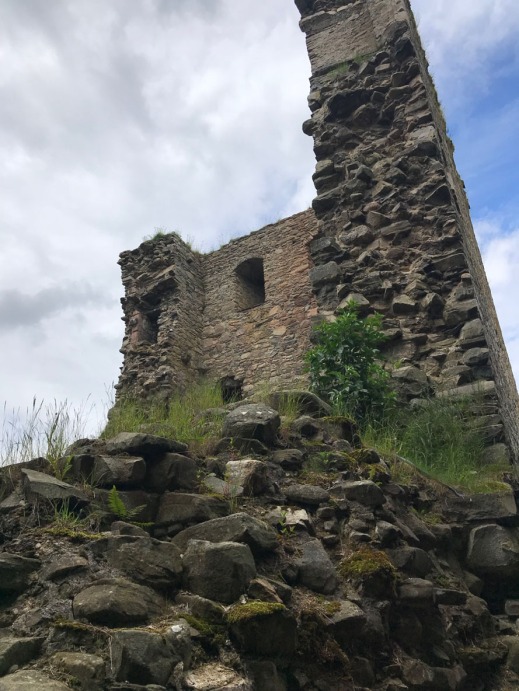
We were standing in the car park near Drumin Castle. Dean was using the visitor map of the Glenlivet Estate to describe the day ahead.
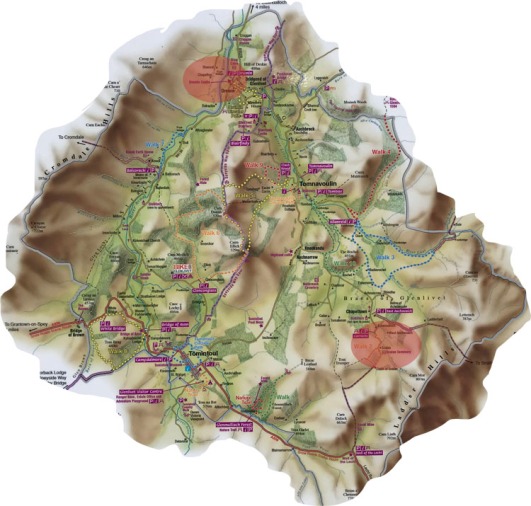
We were to begin by exploring an ancient and little visited stone circle on the nearby slope above the river Livet – The Doune of Dalmore. After this we would cross the river to the nearby ruin of Drumin Castle before driving across the Glenlivet estate to its south-eastern edge to conclude our work on the elements at Scanlan; the home of a secret seminary.
It was expected that we would be able to finish our workshop in time to allow the usual local lunch, together, followed by our departure. Many of us had far to go before we got home on that Sunday. In our case, the journey even to Cumbria was going to take at least six hours.
Both locations for the planned day are marked on the photo of the Glenlivet Estate, above, and have their own maps within the text.

The Glenlivet estate comprises 23,000 hectares of some of Scotland’s most beautiful scenery and lies at the northern edge of the Cairngorm National Park, between the northern Ladder Hills and the Cromdale Hills. Two rivers – the Avon and the Livet run through its heart.
The land in Glenlivet is an elevated plateau and is always higher than 200m (600ft). Although remote, and on the edge of some of Britain’s highest mountains, the gentle landscape is easy to access and explore. People have lived and farmed this region since prehistoric times.
From the 1500’s to the early 20th Century, Glenlivet Estate belonged to the Gordon family, who became the Dukes of Richmond and Gordon. Their legacy can be seen throughout the region.
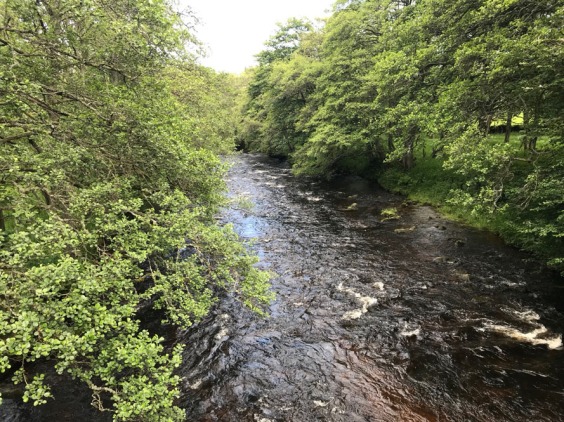
First, we had to cross the river Livet and begin the walk through the gentle meadows.
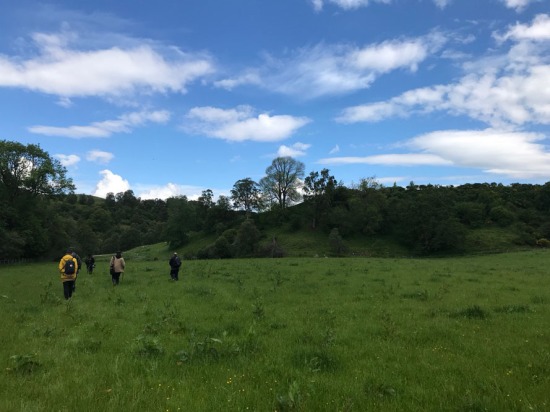
It was an easy climb to the Doune of Dalmore. Soon, we were standing at the base of the ancient site.
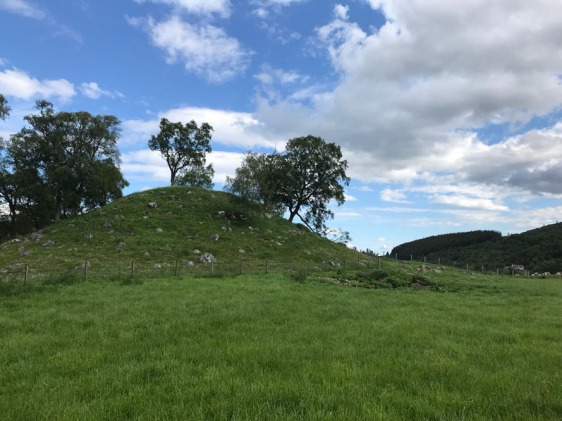
The Doune of Dalmore comprises the ancient remains of a ring cairn – a prehistoric burial monument with an open central area – and a stone circle that surrounds it. This type of circle and ring is known locally as a Clava cairn. The cairn is 13m in diameter and 0.7m high. Four of the stones of the surrounding circle are now standing, but some others, which have fallen, lie where they fell.
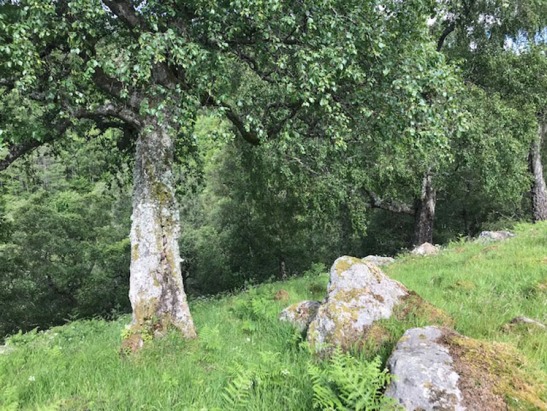
The day was mild and the weather kind. For the penultimate time, we assembled our ribbons into pentagrams, cornered with our special stones, and gathered in our groups of two to partner in inner vision and notation on the element of alchemical ‘Fire’. Fire is both potent and dangerous. It can work good and bad. Thoughts of the witches on the blasted heath came to mind; and also the essence of what they represented within the Macbeth story: they had no power to compel, merely to dangle before human ambition what ‘might be’.
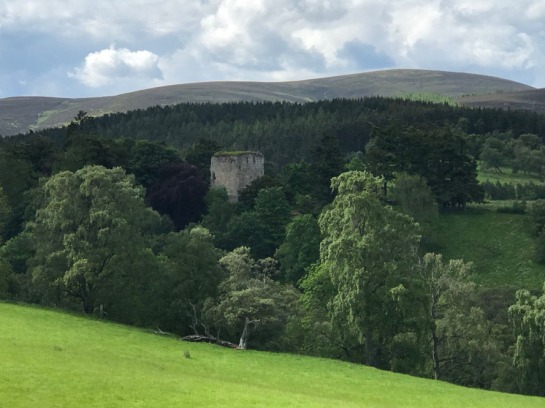
And then it was time to turn and look across the valley of the Livet river to see our next destination. It was our final day… and we had to be open to conclusions – our own and that of the landscape we had ‘asked’ to teach us. With some trepidation, I looked across the clean, flowing water of the Livet to the ruins of Drumin Castle beyond… Drumin was the home of the ‘Wolf of Badenoch’, known in history as ‘Scotland’s vilest man’…
In the words of Scottish historians, “Scottish history has its fair share of deeply unpleasant characters, but Alexander Stewart, 1st Earl of Buchan, is a strong contender for the title of least pleasant of the lot.”
Alexander Stewart, 1st Earl of Buchan, but more commonly known as the Wolf of Badenoch, and the Celtic Atilla, lived from 1343 to 1394. He was the fourth illegitimate son of the future King Robert II of Scotland and of Elizabeth Mure of Rowallan, but became legitimised in 1349 upon his parents’ marriage. His life is a classic example of an egoic character provided with the means to destroy on a wholesale scale.
The element of Fire had well and truly returned to our presence with the glimpse of the life of this evil man. He systematically abused the power his royal father granted him and was fond of burning towns and sacred buildings to the ground. The town of Forres is an example of the former, the destruction of Elgin Cathedral is the worst example of the latter.
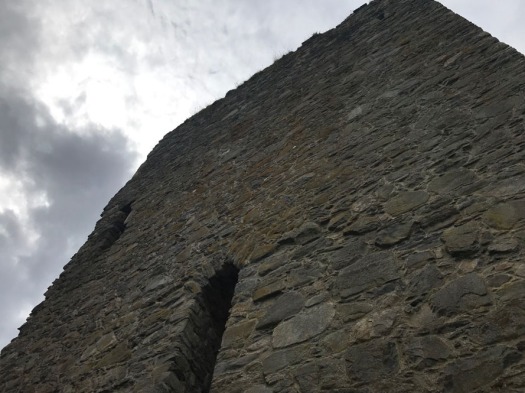
Shortly after, we descended across the meadows, re-crossed the river Livet and began the climb to the Wolf of Badenoch’s castle – Drumin. Scottish castles are usually compact structures. Drumin is strategically placed – overlooking both the river valley and the confluence of the rivers Livet and Avon (pronounced a’an).
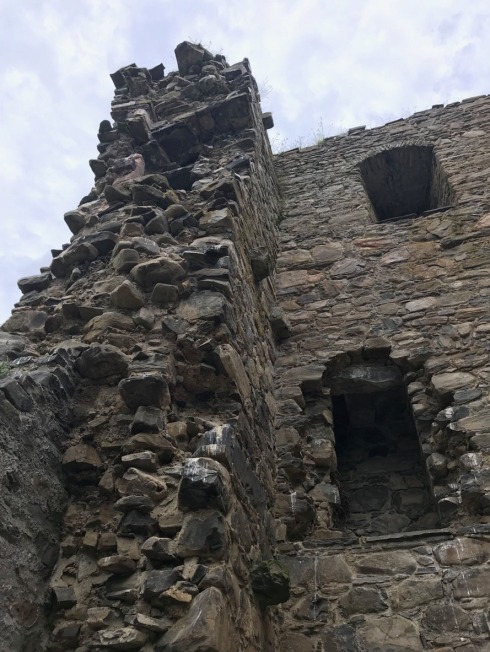
Alexander Stewart died in 1394. He was buried in Dunkeld Cathedral. His tomb is, ironically, one of the few to have survived from Scotland’s Middle Ages. The details of the ‘Wolf’s death’ are unclear, but, as so often happens, the folk legend sheds light on both his life and death.
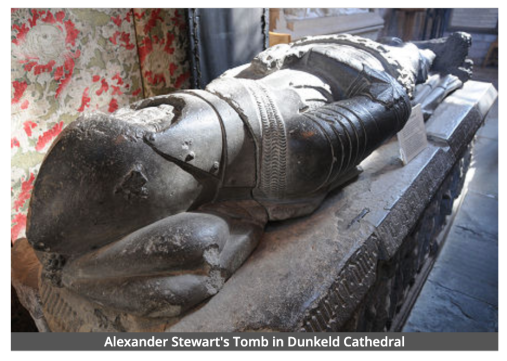
It is said that on the 24th July 1394, a black robed visitor arrived at Ruthven castle and challenged its owner to a game of chess. During the night that followed the castle was battered by a terrible storm, with intense thunder and lightning. In the morning the castle servants were discovered dead outside the castle walls. The Wolf of Badenoch was found dead in the great hall. His body was unmarked…but the nails in his boots had been torn out. This may have been a reference to Christ’s execution – Alexander Stewart’s being the opposite.
There was no sign of the dark stranger… Play ‘chess’ with the devil at your peril…
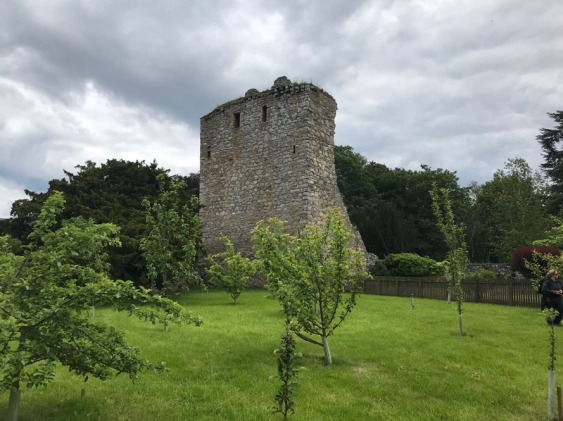
I think Shakespeare would have liked the story. There is no direct proof that Macbeth was based upon Alexander Stewart. Witchcraft was rife at the time of James I (James VI of Scotland) and the King lived in terror of it. Shakespeare based many of his plays on real historical figures. It is reasonable to propose that the Wolf of Badenoch was the fictional twin of the ambitious psychopath who brought such chaos to this part of Scotland.

There was a pleasant end to our visit to to Drumin castle. Part of the garden (see above) has been given over to allow the creation of Glenlivet’s Community Orchard – a place of mutual industry and kindness.
Soon, we were driving across the length of the Glenlivet estate to a place close to its south-east border.
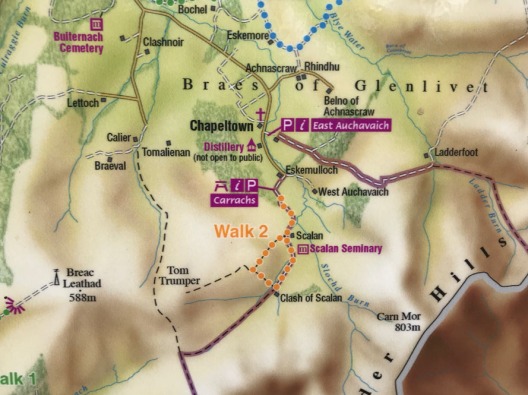
We were headed for the isolation of the Braes of Glenlivet; specifically, The Scanlan, a former and secret Catholic seminary for the training of priests and young men set to become priests.
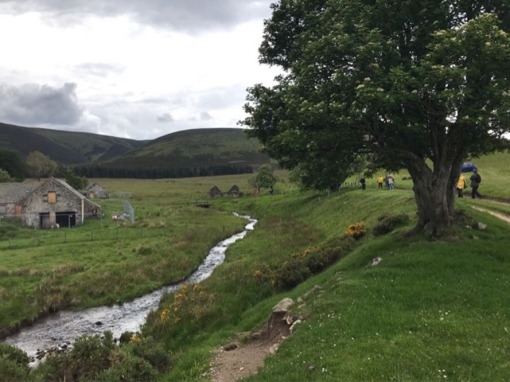
During the 18th century, ‘The Scanlan’ was the only place in Scotland where young men could be trained to be priests – they were named the ‘heather priests’. During the period 1717 – 1799 over a hundred were trained, despite the persecution by Hanoverian soldiers following the failure of the Jacobite Rebellion. The location of The Scanlan was a closely guarded secret, and the site – at the head of a remote valley – was impossible to see until you were close to it.
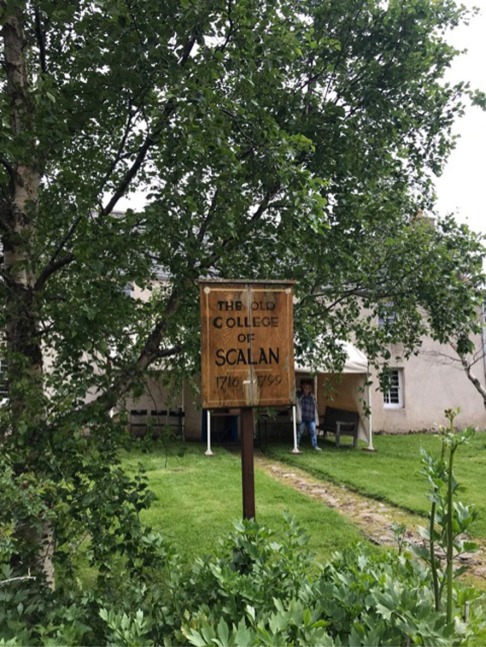
Dean had visited the site of Scalan Seminary several times. He said that, often, he was the only one visiting. He had considered – given its remoteness and usual emptiness – that it would be an ideal basis for us to gather for our final exercise with the ribbon-based pentagrams.
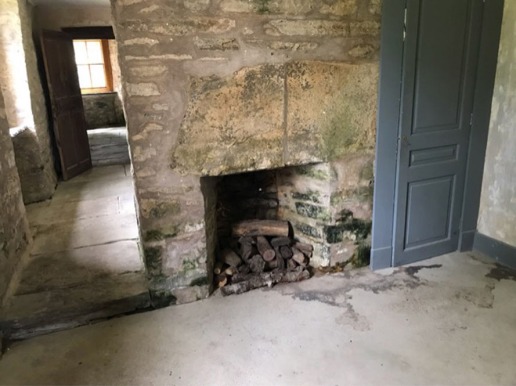
But the ‘witchy fates’ had other ideas. Having made Findhorn beach disappear, and conjured mysterious winds to drag apart our ribbon pentagrams, they pulled off a spectacular strike on the final act in our ‘Macbeth play’.
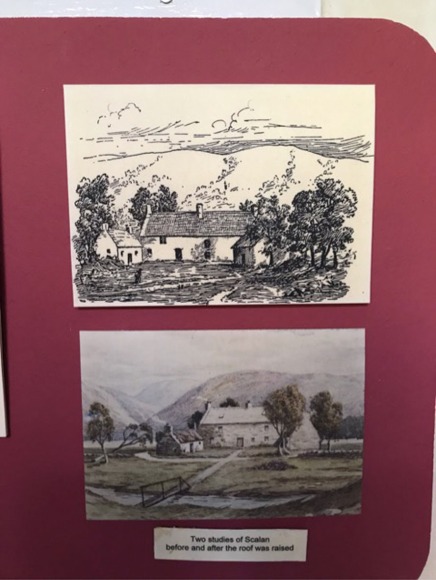
The college played a vital role in keeping the traditional Catholic faith alive in northern Scotland. It’s name derives from the Gaelic word for a hut made of turf pieces – which is how the initial building at Scanlan was constructed.
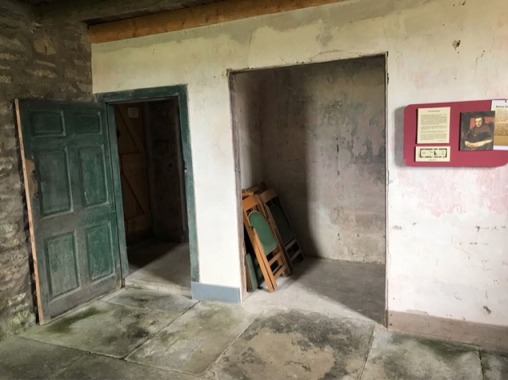
In 1799, the religious training work of the Scanlan was moved to a less remote site, Aquhorthies College, near Inverurie. In researching this blog, I discovered I had a personal link to the tradition begun at Scanlan. My father’s eldest sister married a Glasgow man of the Catholic faith. The local church were helpful during the upbringing of my seven cousins, whom I used to visit every summer. The eldest son (my cousin) eventually left Glasgow to study to become a priest at Blairs College, in Aberdeen. Eventually, he left the priesthood and became a successful lawyer in Glasgow.
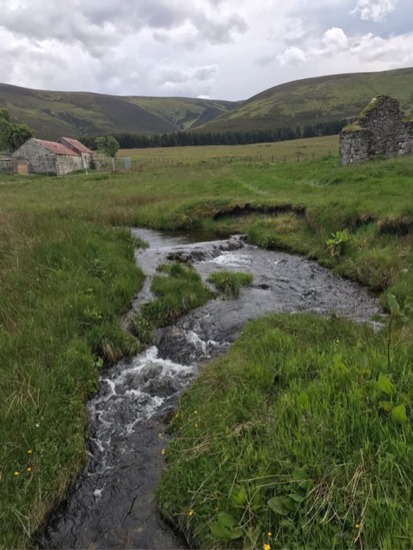
Blairs College had taken over the work of training priests from Aquhorthies College in 1929 and continued this work until 1986. It is, now, also a museum. There was therefore a strong, religious and cultural link between where I was standing at the end of our weekend and my cousin’s life… But I didn’t know at the time.
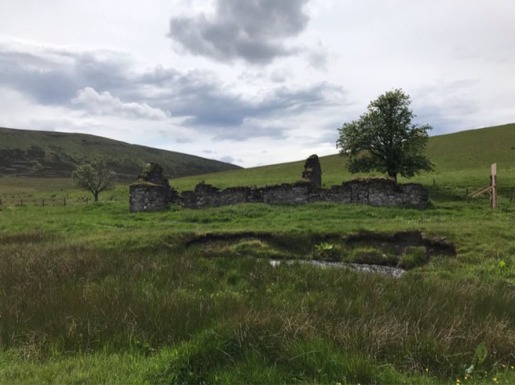
But… the witches, the tricky fates…
No sooner had we arrived ( a twenty minute trek along the land from the car park) than others began to arrive, too. By the time we had taken a quick look at the museum there were upwards of thirty people gathering in a pagoda outside the main door. One glance at the approach track showed there were hundreds more arriving.
It transpired that there was an annual (and well-dressed) pilgrimage to Scanlan… and this was the day…
In deference, we retreated to a point out of sight and over the next small hill, there to lay out our humble pentagrams and perform the last movements that would resolve our work of the weekend, bringing our inner strengths and vision to help dissolve our perceived limitations. All this was focussed on a set of inner symbols that grew into a composite image which we were to take away with us as a lasting focus and token of the work done.
It was beautiful.
By the time we had battled the incoming tide of visitors, and regained the road system, it was five in the afternoon; several hours later than intended. But everyone felt we had enjoyed an excellent weekend among the hills and valleys of this beautiful Scottish landscape.
The oyster-catchers were never far away, and their beautiful calling accompanied our entire weekend.
Our thanks to Dean for the great amount of work that went into planning and realising the three days. We look forward to further Scottish adventures, including “On the trail of the Picts”, our workshop for September 2020.
End.
Other parts in this seriesParagraph
Part One, Part Two, Part Three, Part Four, Part Five, Part Six,
This is Part Seven
©Copyright Stephen Tanham
Stephen Tanham is a Director of the Silent Eye School of Consciousness, a not-for-profit teaching school of modern mysticism that helps people find a personal path to a deeper place within their internal and external lives.Paragraph
The Silent Eye provides home-based, practical courses which are low-cost and personally supervised. The course materials and corresponding supervision are provided month by month without further commitment.
Steve’s personal blog, Sun in Gemini, is at stevetanham.wordpress.com.

Thank you, Sue x
It was a great weekend, Steve :)x
Very busy! x
But some great sites. 🙂 x
All down to Dean x
Reblogged this on Stuart France.
Thank you, Stu.